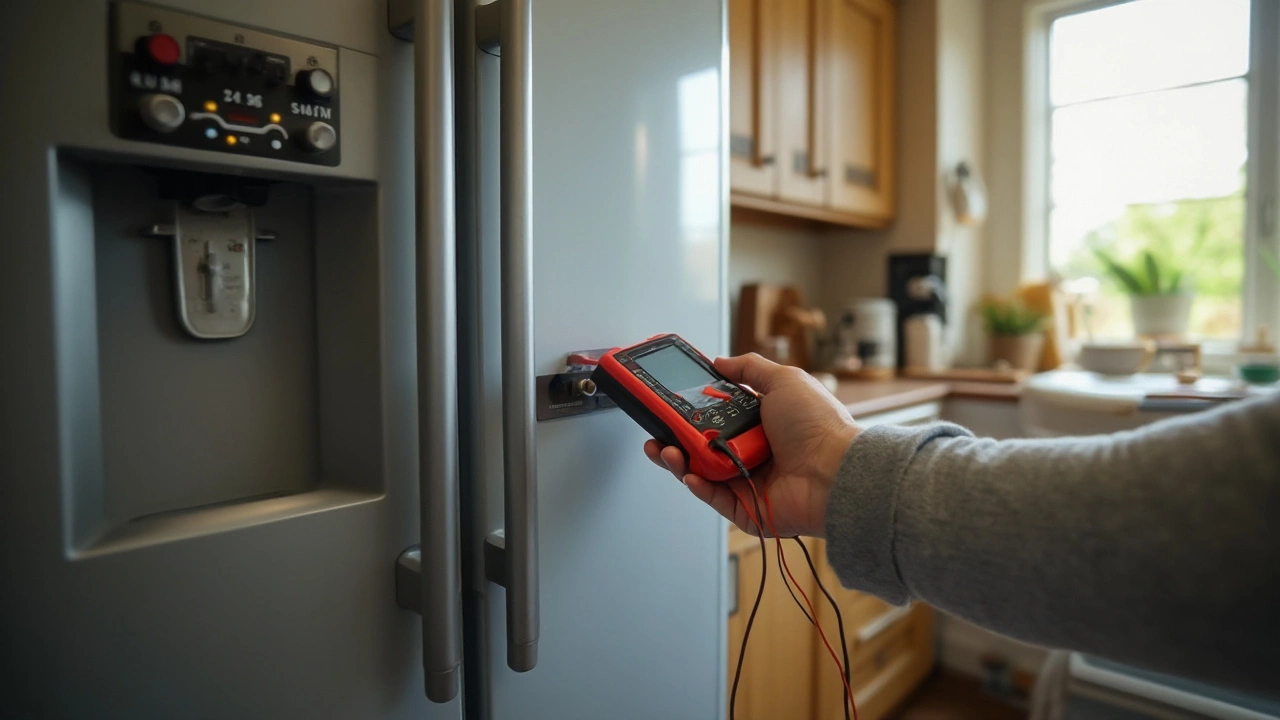Fridge Repair: Quick Fixes, Common Issues, and Pro Help
Ever opened your fridge and felt that cold air was missing? It’s a pain, especially when the groceries start to spoil. The good news? Many fridge hiccups are fixable in under an hour, and you don’t always need a pricey call-out.
First off, check the power. A tripped breaker or a loose plug is the simplest culprit. Reset the circuit, plug the fridge back in, and give it a few minutes to start cooling again. If the light works but the temperature stays warm, move on to the next steps.
Common Problems and DIY Fixes
1. Fridge not cooling enough – Most modern fridges have a thermostat dial. Make sure it’s set to the recommended middle setting. If you’ve moved the fridge recently, the door seal might be misaligned. Grab a piece of paper, close the door on it, and pull it out. If it slides out easily, the seal needs cleaning or replacement.
2. Frost build‑up in the freezer – Too much frost blocks airflow. Defrost the freezer manually: unplug the unit, leave the doors open, and let the ice melt. Once clear, wipe the interior dry, plug it back in, and watch the temperature stabilize.
3. Weird noises – A humming sound is normal, but rattling or clicking can mean the fan or condenser coils are dirty. Unplug the fridge, remove the back panel, and clean the coils with a vacuum brush. Re‑assemble, and the noise should fade.
4. Leaking water – A clogged defrost drain often causes puddles. Locate the drain hole (usually at the back of the freezer) and clear it with a pipe cleaner or warm water.
When to Call a Professional
If you’ve tried the basics and the fridge still feels warm, it’s time to get a pro involved. Look for these red‑flags:
- Compressor never turns on or makes loud clanking sounds.
- Temperature sensor or control board errors, indicated by blinking lights.
- Persistent leaks after cleaning the drain.
- Any refrigerant issues – only a certified technician should handle those.
Professional fridge repair services can diagnose sealed‑system problems, replace faulty compressors, and ensure the unit complies with safety standards. A quick call can save you from a full‑scale replacement, especially if your fridge is still under warranty.
To keep your fridge humming happily, schedule a routine check‑up once a year. Clean the coils, verify door seals, and wipe interior spills right away. These simple habits stop most breakdowns before they start.
Bottom line: many fridge issues are DIY‑friendly, but don’t gamble with the compressor or refrigerant. Spot a major problem? Call a qualified repair service and get your kitchen back to normal fast.
How to Repair a Refrigerator Not Cooling: Easy DIY Fixes and Pro Tips
- Alden Wilder
- Jul 31 2025
- 0 Comments
Fridge not cooling? Discover what really causes cooling problems and how you can fix it on your own, plus when to call in a pro. Step-by-step solutions and tips.
View MoreMost Expensive Refrigerator Repairs: What Breaks the Bank?
- Alden Wilder
- Jun 19 2025
- 0 Comments
Facing fridge problems can be tough on your wallet, but some repairs hurt more than others. This article unpacks the most expensive thing to fix on a refrigerator and the reasons behind those steep costs. You'll learn how critical components work, what signs point to a big repair bill, and whether it's worth fixing or just replacing the whole fridge. Real tips help you spot trouble early and maybe save yourself from a wallet-busting headache.
View MoreFridge Repair: What Is the Most Common Refrigerator Fix?
- Alden Wilder
- Apr 30 2025
- 0 Comments
Ever wondered what usually goes wrong with home refrigerators? This article covers the most common fridge repair, why it happens, and what you can do about it. You'll find practical tips, quick checks, and advice to avoid unnecessary breakdowns. Learn how simple fixes can save you money—and when it's time to call in a pro. Stop letting your groceries (and sanity) slip away from a busted fridge.
View MoreTop Reasons Your Fridge Stopped Working and How to Fix Them
- Alden Wilder
- Jan 24 2025
- 0 Comments
Whether you're dealing with a silent refrigerator or one that's simply not cooling, understanding why a fridge stops working can save you from food spoilage and costly repairs. We'll explore common reasons why fridges fail, including thermostat issues, power supply problems, and obstruction of air vents. With practical tips and insightful guidance, this article aims to provide you with the knowledge you need to diagnose and potentially fix your refrigerator issues at home, tackling concerns with both ease and efficiency.
View MoreIs It More Cost-Effective to Fix or Replace Your Refrigerator?
- Alden Wilder
- Nov 28 2024
- 0 Comments
Deciding between repairing or replacing a refrigerator can be a challenging choice for homeowners. This article delves into the various factors that can influence this decision, including the age of the appliance, repair costs, and potential energy savings. It provides insights and practical tips to help you weigh the financial implications and advantages of each option. Learn how to make an informed choice that best suits your needs and budget. Discover key indicators that signal when it's time to let go of your old fridge.
View MoreDIY Fridge Repair: A Guide to Fixing Your Fridge at Home
- Alden Wilder
- Oct 24 2024
- 0 Comments
Fixing a fridge by yourself might seem daunting, but with the right guidance, it can be an achievable task. Understanding common issues like strange noises, temperature inconsistencies, and leaks is essential. This article explores whether repairing a fridge at home is feasible, highlighting necessary tools and safety tips. With patience and attention, tackling repairs can be rewarding and cross a major chore off your to-do list.
View More




